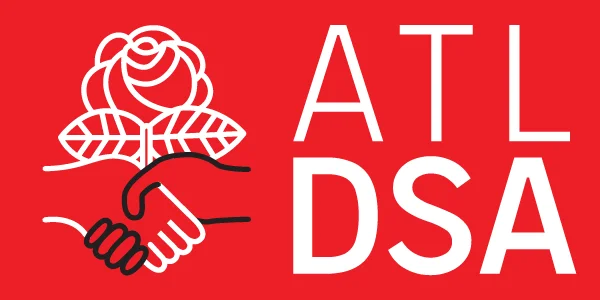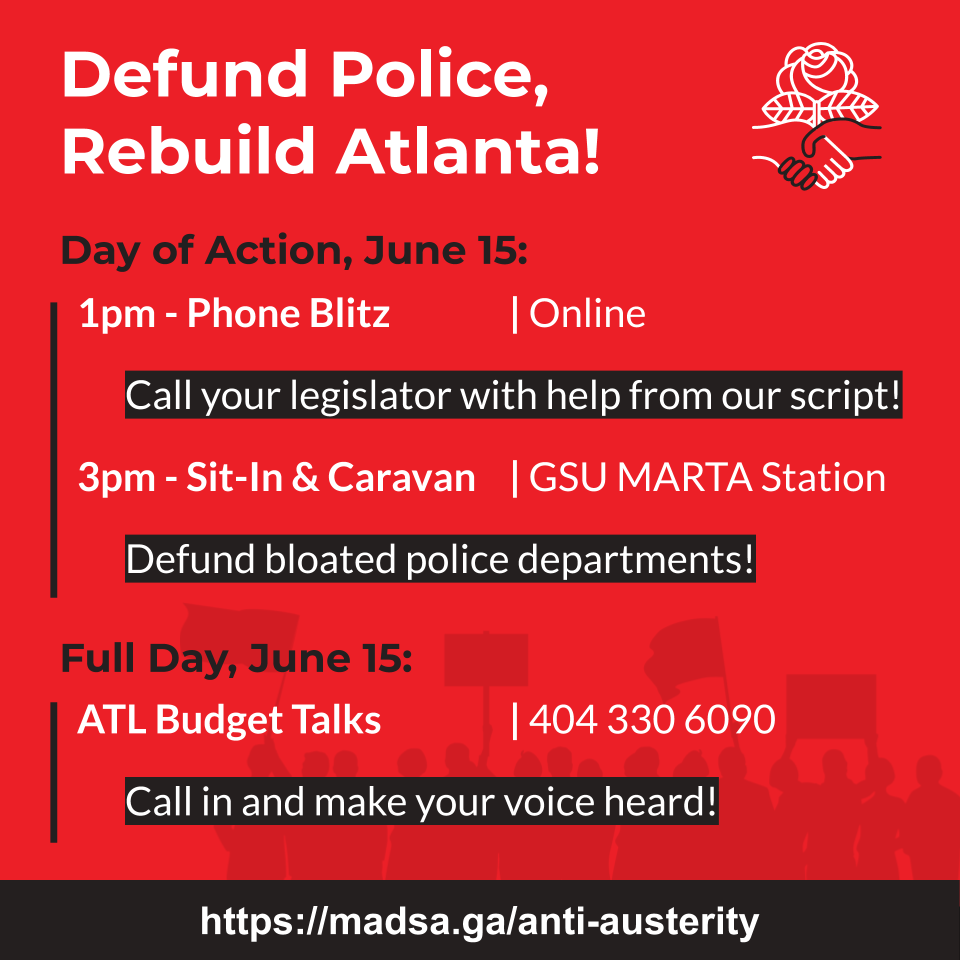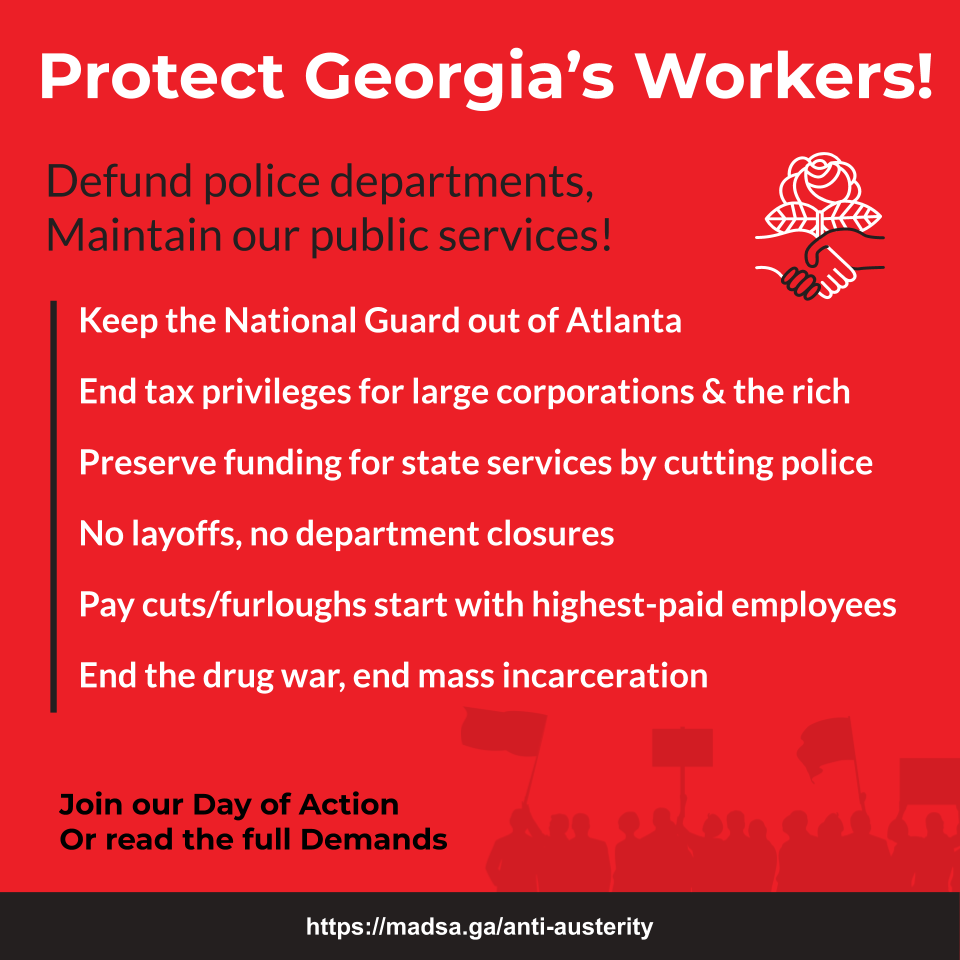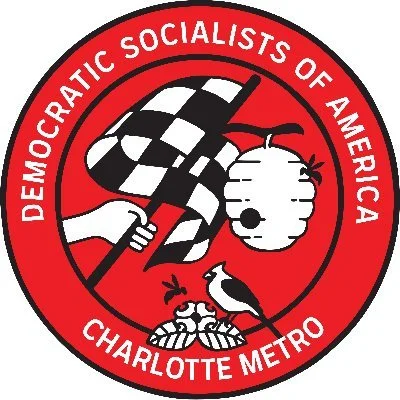

Liberation Theology vs. Law-and-Order Theology


Champlain Valley DSA Endorsements for 2020 elections
The Champlain Valley DSA is excited to announce the endorsement of an excellent slate of candidates for the 2020 elections. Meet the candidates below.
We will also be hosting a Meet the Candidates webinar with endorsed candidates for the state legislature on Monday, July 27. Register for the webinar or tune in live on Facebook.
Finally, don't forget to request your absentee ballot today and help get these candidates into the State House.










Press Release: HPDSA & Sunrise ADK endorse Fred Balzac for Village Board
Contact: for High Peaks DSA, Zohar Gitlis, highpeaksdsa@gmail.com; for Sunrise Adirondacks, Kayla Lodico, sunriseadirondacks@gmail.com; Fred Balzac, 518-588-7275/fredbalzac@aol.com
Co-authored by the High Peaks DSA Executive Committee, Sunrise Adirondacks Steering Committee, and Fred Balzac.
For immediate release:
High Peaks Democratic Socialists of America, Sunrise Adirondacks and Fred Balzac commit to work together through the Sept. 15th election and beyond for progressive reforms—for the benefit of all Saranac Lake Village residents and the region’s environment.

Sign up to volunteer for the High Peaks DSA for Fred Balzac campaign: https://forms.gle/NbNrFTVsRrtLDtVR9
Two local chapters of national political organizations that are at the forefront of the progressive movement in the United States have endorsed Green Party candidate Fred Balzac in the race for Village of Saranac Lake trustee. The election, which was postponed from its original date of March 18, 2020 because of the COVID-19 pandemic, will take place at the Harrietstown Town Hall in Saranac Lake on Tuesday, Sept. 15, as well as by absentee ballot.
The two groups—High Peaks Democratic Socialists of America (DSA) and Sunrise Adirondacks—are urging village residents to support Balzac’s candidacy in a broader effort to raise a wide range of pressing issues and needed reforms at the local level, in the hopes of spurring a large voter turnout for the Sept. 15th election.
“We are seeing a record number of young people waking up to inequality in our society; simultaneously poor, historically marginalized and oppressed people are organizing mass movements with bold demands to address systemic injustices. It’s been astonishing to see how many people want to see change locally as well. In June we had about 700 people demanding racial justice in Riverside Park, which is more people than voted in each of the last two Village Board elections. We’ve seen this level of interest bleed into Village Board meetings, which have been well attended throughout the spring and summer. We’re excited to support Fred and feel confident that he can rise to the current moment, unlike some of our current legislators who have continued to fumble and play defense,” said High Peaks DSA Co-Chair Zohar Gitlis.
According to village records, 590 votes were cast in the most recent competitive race for trustee, in 2016. In the 2018 election, with candidates for mayor and two trustee seats running unopposed, only 255 votes were cast. The village has 5,400 residents, according to saranaclakeny.gov.
Among the locally relevant issues that one or both groups have been grappling with are the economic impact of the COVID-19 pandemic, housing rights, the establishment of an anti-choice pregnancy center in the village, policing reform, the lack of widespread access to renewable energy and the effect of climate change on the local environment.
Solutions and reforms being put forth by the groups include: mutual aid; rent cancellation and an extended eviction moratorium; a shift in spending from policing to social services; local implementation of the Green New Deal; sustainable development and “smart growth”; and a diversification of the local economy (more details here).
In the race for village trustee, Balzac—whose campaign slogan is “Your struggle is OUR fight”—was either already running on these issues and advocating for these solutions or has embraced them as a result of the endorsement process. Members of the two grassroots activist groups see his candidacy as a vehicle for influencing public discourse on these issues and solutions not only during this year’s election but going forward.
“We are excited by Fred’s willingness to listen and dedication to representing the people of his community, and his urgency to take action on public concerns,” said Kayla Lodico, Hub Coordinator of Sunrise Adirondacks.
As for the candidate himself, he views the endorsements by the two groups as an opportunity to build a pro-people/pro-environment coalition throughout the Adirondack North Country. “I am honored but also humbled by the endorsement of both High Peaks DSA and Sunrise Adirondacks and take seriously our joint commitment to continue working together on issues that are so critical to the well-being of village residents and the local environment, win or lose on Sept. 15th,” Balzac said.
“Both of these groups are comprised of smart, dynamic and dedicated individuals—many of whom are two, three or four decades younger than me—and they really represent the future of our village and region. I’m pleased to report that, as long as these good people stay involved, the future is in very good hands.”
To learn more about: Balzac’s candidacy and voting in the village election, including by absentee ballot, contact Fred at 518-588-7275 or fredbalzac@aol.com; re: High Peaks DSA, email the Executive Committee at highpeaksdsa@gmail.com and/or visit highpeaksdsa.org; and re: Sunrise Adirondacks, email the Steering Committee at sunriseadirondacks@gmail.comand/or visit facebook.com/
About the Candidate
Fred Balzac has more than 40 years of professional experience as a journalist, medical writer-editor, publicist-promotions writer, innkeeper, nonprofit/community organizer and grant writer. He earned a B.A. in English from Columba University in 1983 (graduating with the same class as one Barack Obama!) and, 30 years later, went back to college to earn a Multimedia Journalism Certificate at SUNY Plattsburgh, where he continues to take a class each fall & spring semester.
Since moving to the Adirondacks full-time in 1993, he has been involved as a volunteer in numerous causes and community efforts. As co-organizer and president of Bridge Beyond in the Town of Jay, he led a 15-year effort to protect the Jay rapids and swimming hole and preserve the historic (circa 1857) Jay Covered Bridge (JCB)—resulting in a million-dollar restoration plan that renovated the JCB as a pedestrian-bike crossing and saved the scenic-recreational upstream river corridor from desecration via the placement of a new bridge downstream, while also restoring reliable emergency-vehicle protection to the eastern side of the Ausable River. This pro-environment struggle by Balzac and comrades was recognized early on by the Adirondack Council, which bestowed its Community Action Award on Bridge and Beyond in 1995.
Following his opposition to the creation of an occupancy tax in Essex County out of a concern that it would largely benefit the county’s richest community, Lake Placid/North Elba, and shortchange most of the county’s other 17 towns, Balzac was named by then-Jay Supervisor Thomas O’Neill to the county Occupancy Tax Advisory Committee and briefly served as its chair. A registered Democrat for most of his adult life, Fred served on the Essex County Democratic Committee from 2008-2011 before changing his registration to the Green Party.
Balzac’s reasons for switching included his alignment with the Green Party’s Four Pillars and Ten Key Values (see gpny.org), the continuing influence of corporations and the wealthy on the Democratic Party at the national and state levels and the inability of the Party to endorse unions at the county level.
A formative influence on Balzac was his temporary position as a FEMA-funded crisis counselor in the aftermath of Tropical Storm Irene, which helped open his eyes to the impoverished living conditions of many North Country residents. Ideologically, Fred has consistently moved to the left as he has watched inequality grow under the leadership of mainstream politicians, and he is now proud to be a dues-paying member of DSA.
Issues And Solutions
Here’s how Fred Balzac’s candidacy for Village of Saranac Lake trustee aligns with some of High Peaks DSA’s concerns and aims:
Housing rights: One of the group’s earliest actions was a call for rent cancellation in the face of the COVID-19 economic shutdown. Balzac, who is a dues-paying member of DSA, supports rent cancellation or mortgage cancellation for all tenants, landlords and homeowners adversely affected by the pandemic and is calling for a local extension of New York State’s moratorium on evictions through at least the end of 2020. If elected, he is committed to at least beginning a discussion of the village implementing rent-control/rent-stabilization policies similar to what exists in New York City.
Mutual aid: As a response to the severe economic impact of the COVID-19 pandemic, High Peaks DSA initiated an active mutual-aid campaign that is ongoing (see highpeaksdsa.org/campaigns). Balzac supports this campaign and endorses the pandemic-response platform of Green Party presidential candidate Howie Hawkins (see howiehawkins.us/platform), including the implementation of such “COVID-19 emergency measures for the duration of the crisis” as “Medicare to pay for COVID-19 testing and all emergency health care; a “moratorium on evictions, foreclosures and utility shutoffs”; suspension of “student loan payments with 0% interest accumulation”; and “a 10-year, $42-trillion ecosocialist Green New Deal for economic recovery through a just transition to 100% clean energy by 2030.”
Crisis pregnancy center (CPC): As an active member of High Peaks DSA’s CPC working group, Balzac helped draft the group’s position statement opposing the establishment of the Adirondack Pregnancy Center in Saranac Lake and vehemently opposes the center on the grounds that “It will harm women.” He believes the village Development Board may be in violation of its own Development Code and is calling for the board to reverse its decision in March approving the center’s establishment. Balzac is also calling for the Development Code to be revised to enable the Village Board of Trustees to override Development Board decisions. “Elected officials should have the final say, not people who are appointed to boards and who are not directly accountable to the People,” Balzac said.
Policing reforms: High Peaks DSA has taken a leadership role on this issue, having organized the recent “Black Lives Matter” demonstration in Riverside Park that drew the largest number of protestors seen in Saranac Lake in recent memory and also meeting recently with Chief of Police James Joyce, and the group has launched a multi-pronged campaign focusing on policing and justice system reforms. Balzac, who attended the meeting with Chief Joyce and was impressed by his openness to working with the community, supports shifting Village funds from policing per se to social services—in terms of things like 911 calls about mental-health-related or other non-criminal matters. The candidate is also calling on the Village to enact a totally transparent process open to all members of the public in fulfilling Governor Cuomo’s recent executive order on reforming local police policies and practices.
Budget priorities and political transparency: Several community members, including High Peaks DSA members, spoke out and/or attended the June 22 Village Board meeting at which the board, by a 3-0 vote (with Trustee Patrick Murphy absent and Mayor Clyde Rabideau not voting), approved a $12,500 contract with the Lake Placid-based Regional Office of Sustainable Tourism (ROOST) for destination-tourism marketing services, along with an additional $12,500 for the creation of a community enhancement fund available to the village’s Arts & Culture, Downtown and Parks & Trails advisory boards. While Balzac supports the latter funding, he says the funding of ROOST raises serious questions about the wisdom and transparency of the Village Board’s action.
“ROOST already receives a couple of million dollars a year in bed-tax money to do things like manage saranaclake.com,” Balzac said. “For it to enter into a contract with the village that includes managing saranaclake.com is double-dipping and, in my view, bad public policy. Given that ROOST has been dropped by both Franklin County and the Town of Harrietstown, I question why Mayor Rabideau and Trustee Shapiro in particular pushed to give ROOST work in Saranac Lake—at a time when New York State is facing billions in revenue loss that the state seems likely to pass on to localities in the form of cuts in state aid.
“We also need to rethink the whole approach to tourism that ROOST and its CEO, Jim McKenna, have been pushing in the region. Lake Placid is now facing a crisis in affordable housing due to the advent of Airbnb and other short-term rentals and is becoming overdeveloped and unlivable thanks to an over-reliance on tourism that benefits the big hotels and not necessarily the residents of the community. I don’t want to see that fate befall Saranac Lake and will fight it.”
An Affinity with Sunrise Adirondacks for Going Green
The alignment of Balzac’s candidacy with Sunrise Adirondacks is evident from the group’s rigorous endorsement process that encompassed a detailed questionnaire and conference-call interview with the candidate, including such questions and responses as:
Regarding the requirement that he take the No Fossil Fuel Money Pledge and the Sunrise Movement’s Green New Deal Pledge to use your office to support and advance the Green New Deal through all legal avenues, Balzac affirmed that he made both pledges.
Other Important Issues To Fred Balzac
● “Working to enhance our current housing stock, protect the rights of tenants while being fair to landlords and ensure more & better affordable housing—e.g., by requiring developers of high-end housing to set aside a percentage of units for medium-to-low-income housing….”
● “Push for ecologically sustainable development and SMART growth—bearing in mind always the potentially catastrophic impacts of the climate crisis on our community”
● “A MORATORIUM on any further waterfront development: I remain hopeful that the new hotel on Rte. 86 will prove to be beneficial to the Village economy but believe the project was not well-thought-through concerning its placement, oversized mass, and impact on traffic patterns & water quality—and that similar future projects should not be allowed on our waterways.”
● “Go Green: work toward more renewable energy, preservation of open space, and local food production in both the public and private realms—while connecting local government with area schools to expand educational opportunities for all, including adults”
● “Expand local tourism efforts while diversifying our economy so that Saranac Lake never becomes too dependent on tourists and we can avoid, for example, the adverse effects Lake Placid is experiencing with short-term rentals/Airbnbs. I’m also a strong supporter of the arts as an economic driver.”
● “Enthusiastic support for Franklin County’s choice of the Franklin County Local Development Corporation (LDC) to handle marketing the region—a choice the Village Board should go with”
● “Maximizing municipal services while keeping Village taxes down as much as possible”
● “Most of all, honest, open and transparent local government, serving the interests of working people, families with school-age children, seniors, renters, property owners, the economically disadvantaged, small business owners and permanent residents—not the special interests (defined as any entities that seek consideration from government that’s not in the public interest)”
The post Press Release: HPDSA & Sunrise ADK endorse Fred Balzac for Village Board appeared first on High Peaks DSA.


Rev. Andrew Wilkes calls for a Moral Coalition to Create Lasting Structural Change


KRJ on Defunding the Police, Christian/Buddhist spirituality, and her NYC City Council Campaign


June 15 Day of Action
Defund Police! Protect Workers! Rebuild Atlanta!
Join us for a day of action against state budget cuts on June 15, 2020.
Governor Brian Kemp is calling on all state agencies to prepare for a 14% budget cut, but we think the State of Georgia and the City of Atlanta should keep cuts where they belong! Our schools, hospitals, and public services shouldn’t suffer when we’re spending too much on police cruisers, tanks, and riot gear. Tax the rich and defund the police!
This June 15 day of action is organized by Metro Atlanta DSA in collaboration with leaders and organizers from Atlanta-area unions and Black socialist groups.

Schedule for the June 15 Day of Action 
Scroll down for our full statement & list of demands.
June 15 Schedule & Action Items
1:00 PM
Phone blitz!
Call your legislator to demand a just state budget.Use our script!
3:00 PM
Downtown sit-in & caravan!
Let’s make some noise! If you’re walking and want to rally at the Capitol, meet at the GSU MARTA station, and if you’re driving, meet at Grant Park.
ALL DAY
Atlanta Budget Talks!
Call (404) 330-6090 and demand that the City of Atlanta defund the police. Use our script!
Our Full Statement
As a result of the COVID-19 pandemic and consequent recession, Governor Brian Kemp released a statement on May 1st calling on all state agencies to prepare for a 14% budget cut in the 2021 fiscal year [5]. Historical experience has taught us that these cuts often disproportionately harm our most marginalized communities. Alternatively, investment in public necessities including healthcare, affordable housing, education, and transportation would help protect all residents of our state.
The burden of Kemp’s proposed cuts will directly contribute to deepening poverty and weakening the working class’s ability to recover—specifically in low-income communities, rural regions of the state, immigrant families, and Black communities. Rather than slashing funding for the services that millions depend on for life, we call on the state of Georgia to put our most marginalized citizens first by taking a more equitable, just, and humanistic approach to balancing the budget.
More recently, in response to protests demanding justice for Black lives like George Floyd, Breonna Taylor, and Ahmaud Arbery, Atlanta Mayor Keisha Lance Bottoms has failed to protect Atlantans, opting instead to lead a police occupation of the city. As Georgians struggle to pay rent, hold jobs, and afford healthcare, our leaders have poured money into a deadly, racist police and prison system and handouts to employers and landlords.
While our people suffer, like furloughed service workers at Hartsfield-Jackson Airport left without healthcare or job security [1], our state and local governments respond with tax cuts and subsidies for Georgia’s wealthiest corporations [2]. Our governments have spent enormous resources to protect the ultra-wealthy, at often violent cost to the communities they exploit for profit.
We call on the people of Georgia to join us and refuse any budgets that erode our public schools, hospitals, food access, safe housing, and other vital public services without first cutting from Georgia’s violent carceral systems and its subsidies for the capitalist class.
Instead of a broken, racist system that treats essentials as commodities reserved for those who can pay, Metro Atlanta DSA calls for a just budget that protects the crucial public services that our people depend on.
Our Demands
We demand that the City of Atlanta:
- End the police occupation of Atlanta, keep the curfew lifted, defund the Atlanta Police Department, and close the Atlanta City Detention Center. Reinvest recovered funds in Black communities and restorative community programs;
- Adopt the demands of Unite Here Local 23 [1], including guaranteeing recall rights for workers at Hartsfield-Jackson Airport for 36 months and guaranteeing healthcare for all furloughed workers;
- Adopt the demands of Black movement organizations in Atlanta [4], including a moratorium on books and arrests for minor offenses, a moratorium on rent, mortgage, utilities, evictions, and parking payments; emergency housing for people without homes, the immediate release of those incarcerated in the Atlanta City Detention Center and providing those released with housing, transportation and other services as needed; and the reduction of police presence in highly vulnerable neighborhoods.
We further call on the State of Georgia specifically to:
- Keep the National Guard out of Georgia;
- Immediately end the drug war in Georgia, beginning with legalizing marijuana and immediately commuting related sentences;
- Move to end mass incarceration as well as the spread of COVID-19 by dramatically reducing the number of people incarcerated in Georgia, including in county and city jails, and ensure those released have access to the health, financial, transportation, and other resources needed to successfully transition out;
- End all special tax privileges, exemptions, and loopholes for large corporations and the rich, such as the costly film tax credit;
- Adopt the anti-austerity demands of the United Campus Workers of Georgia [3], aimed at reducing harm to working-class and marginalized employees, including mandating that any pay cuts or furloughs must begin with the highest-paid public employees and must be made on a progressive basis, with those of the highest earnings giving up a larger percentage of their salary or taking more furlough days;
- No layoffs, program closures, or department closures for state employees, or employees working for state-subsidized business, excluding the police.
Much of the catastrophe resulting from COVID-19 was avoidable, and the severity of its impact is directly tied to the injustices of capitalism. As socialists, we reject an order that places private property and wealth above human life and dignity.
We will not be sacrificed for billionaire profits!
References
[1] Unite Here Local 23 represents airport service workers and hotel workers across the country, including at Atlanta’s Hartsfield-Jackson International Airport, which has placed its concessions workers on recall without healthcare; https://www.unitehere23.org/updates-victories-and-news-coverage/
They have a petition of demands, addressed to Mayor Bottoms, here.
https://actionnetwork.org/petitions/economic-essentials-for-atlantas-airport-concession-retail-workers
[2] GBPI estimates that Georgia gives $9.8 billion per year in tax breaks for special interests, that setting the tobacco tax at the national average would raise $600 million per year, and that closing an itemized tax deduction loophole for high earners would generate $175 million per year; https://gbpi.org/2020/georgia-cant-afford-another-lost-decade-options-to-increase-state-revenues-to-close-budget-shortfalls/.
GBPI also reports the state has nearly $1.3 billion in lottery reserves, which could fund shortfalls in HOPE college programs as well as Pre-K; https://gbpi.org/2020/unused-lottery-funds-available-to-support-more-affordable-access-to-college/.
[3] The United Campus Workers of Georgia represent workers at higher education campuses across the University System of Georgia. https://www.ucwga.com/news/ucwga-calls-compassion-response-14-budget-decrease
[4] Many organizations form The Peoples’ Response Atlanta, a collective of concerned citizens and community organizers calling for an adequate response to the COVID-19 pandemic and resultant economic crisis from Mayor Bottoms. You can read their demands here: www.bit.ly/DearKeisha or https://wearyourvoicemag.com/peoples-response-atlanta-coalition-mayor-keisha-lance-bottoms/
[5] Recent reports indicate that the budget cuts have been revised down to 11%.


Resolution to Prohibit Police Presence in CLTMDSA
As voted on at the June 7th Meeting of the Charlotte Metropolitan Democratic Socialists of America, the voting body has adopted the the following resolution:
Therefore, be it resolved, employment as a law enforcement officer is in opposition to the principles of the organization as outlined in DSA constitution article II. “Law Enforcement officer” shall be defined as “an individual who is sworn, badged, and arm-able by the government to enforce the law, or a prison guard; or individuals who are members, operators, or supporters of police associated union organizations”(Whether employed by the government or a private company). Persons employed as law enforcement are therefore excluded from membership in Charlotte Metropolitan DSA. Whereas, law enforcement agencies operate to promote the interests of capitalist institutions and to suppress organized dissent against their control of American society; and Whereas, oppressed groups with whom the DSA seeks to organize such as people of color, sex workers, and the homeless have immediate reasons to be afraid of the police, and uncomfortable in their presence.


PETITION: Ordinance To Explicitly Condemn Police Brutality & Implement A Zero-Tolerance Policy Towards Abusive Policing
High Peaks Democratic Socialists of America (DSA) seeks to express our collective horror at the cold-blooded murder of George Floyd by officers in the Minneapolis, Minnesota police force and our solidarity with the black Americans and citizens of all races who have taken to the streets to peacefully protest police brutality and state-sanctioned racism in our country.
While High Peaks DSA recognizes that the Saranac Lake police department maintains a relatively positive relationship with the village community, we call for the Village Board to adopt an ordinance that explicitly condemns police brutality in light of the murder of George Floyd and implements a zero-tolerance policy towards abusive policing. By explicitly condemning police brutality, the Village of Saranac Lake will signal itself as a safe space for diverse communities.
High Peaks DSA also calls for the Village Board and Police Department to partner with village residents to establish a system of community oversight to ensure cooperation, accountability, and justice for all.
Fill out the form below if you’d like to sign the petition:
The post PETITION: Ordinance To Explicitly Condemn Police Brutality & Implement A Zero-Tolerance Policy Towards Abusive Policing appeared first on High Peaks DSA.


Metro Atlanta DSA stands with the nationwide anti-racist uprisings
Over the past few days, Atlanta has seen an organic, spontaneous working class uprising inspired by the uprisings in Minneapolis and elsewhere around the country. Mayor Keisha Lance-Bottoms has joined forces with Governor Brian Kemp to launch a brutally authoritarian crackdown on the protests, invoking the national guard and hostile military tactics. This looks like war because it is war. This is class war being waged by the ruling capitalist class and their jackboot cronies against Atlanta’s Black working class.
The Metro Atlanta Democratic Socialists of America (MADSA) unequivocally supports the working class uprisings developing in Atlanta and across the country led by the anti-racist Black working class. We support the #BlackLivesMatter movement and the efforts of the leading Black working class to defeat mass incarceration and the neo-fascist police state. We stand in solidarity with George Floyd, may he rest in power, with his family, and with the millions of Black people who fear death because of the violence of white supremacy in the United States.
The racist and white supremacist institutions of capitalism that oppress people of color must be immediately dismantled, and they can only be dismantled by a mass movement. Over the past few days, our members have been on the ground working to build this movement, standing side by side with the working class in its struggle for Black liberation and racial equality. Over the coming weeks, we will do our best to play a principled and helpful role in this non-violent anti-racist movement.
The images and videos of police officers brutalizing Atlanta workers are sickening. No amount of “administrative leave” can change the inherently oppressive nature of the Atlanta Police or the police at large. There is a pattern of injustice and impunity that’s survived decades of elections, all under Democrats. The racist policing system itself must be totally upended.
We demand that Mayor Bottoms and Governor Kemp immediately:
- Remove the National Guard
- End the city curfew
- Restore MARTA services
- Release everyone arrested during all protests
- Demilitarize, disarm, and defund the police
The sign outside the CNN Center has already been repainted, but the life of George Floyd can never be replaced. Instead of addressing the needs of the Black working class, Mayor Bottoms has chosen to lecture the people of this city about property rights. She has shown that she values property over human life, and that her allegiance lies with the ruling class, not the working class majority of Atlanta.
We’re exhausted with the blame games. “Outside agitators,” organized crime, “thugs,” even foreign intervention! We are living in unprecedented times but this isn’t a gaudy spy novel. There is no sinister plot – we are seeing the natural, organic response of the working class to capitalism in crisis. Of course there are uprisings when there is nearly 30% youth unemployment and when the police are wantonly killing innocent people.
All footage of the protests clearly show that the police are the instigators of violence, in Atlanta and elsewhere across the country. The killings of George Floyd and so many others are inexcusable. The brutally militaristic police response to peaceful protests is unjustifiable. In the face of state violence, the working class is simply defending itself. The only way for this violence to stop is for the police to stop being violent.
Unfortunately our rulers are determined to make us disbelieve our own eyes and ears. They are inventing boogeymen and scapegoats. They demand more brutality against the people whose labor makes the world run. They threaten arrest, imprisonment, disfigurement and death to people across every age, race, and gender who just want to live in peace and be free of police brutality.
Atlanta has a history with the civil rights movement, but the struggle for civil rights and racial equality is clearly unfinished. We have a chance now to write our own history and set an example for unity and clarity in a time of injustice and uncertainty. We strive to build a new world rooted in justice, liberty, and peace for all people.
The Metro Atlanta DSA has officially endorsed and calls on our members to attend the Protest March & Rally for Justice for Black Lives on Sunday, June 7th at 12pm. We echo the organizers’ demands:
- Pass the Hate Crimes Bill
- Repeal the Citizen’s Arrest Law
- Bring Killer Cops and Lynchers to Quick Justice
- Criminal Punishment Reform
- Stop Police Brutality & Militarized Policing
No Justice, No Peace
Metro Atlanta DSA Executive Committee
Photo credit: Steve Eberhardt


George Floyd Protest Statement & Resources
A statement from Charlotte Metro DSA:
Over the past few days there have been many local events circulating on social media to protest the murder of George Floyd at the hands of the Minneapolis Police Department. Nationally and locally there is concern that some of these have been created by bad-actors – or at least disorganized actors that place our most vulnerable groups in danger. Many people in Charlotte are looking to us to help discern which protests are legitimate. We have compiled the following information to share with the Charlotte community. This information best reflects our knowledge of local events at this time. We would also like to issue general guidance for anyone interested in joining a protest and information on the events of Friday, May 29th.
Right now we should protest the murder of George Floyd and fight for the abolition of the police state. Capitalism is killing and exploiting workers right now. It always has, and the police state props this up. We must listen to black communities and their leaders for direction with these protests.
Local Protest Information
It Ends Now: Marching in Unity for Racial Justice
Hosted by It Ends Now Charlotte
Sunday, May 31st | 1:00 PM | First Ward Park
It Ends Now is comprised of local community leaders and clergy people. The organizers are, and have historically been, active in Charlotte and the surrounding areas. They are taking precautions to ensure social distancing and protester safety. We have talked to the organizers, and they are people we trust. While this is affiliated with local Christian groups, people of all faiths and backgrounds are welcome to attend.
Please be aware that police will be present at this event, including plainclothes officers.
They are asking attendees to do the following:
Wear white
Make a sign
Wear a mask
Bring water & walking shoes
Social-distance at the park and while marching
They have stated that kids are welcome. However, we advise against this due to reactive and aggressive actions of Charlotte Police at the protest on Friday night. We believe the protest will remain peaceful, but we want to ensure the safety of children especially.
They have created a Facebook event where they are providing updates and answering questions. Their willingness to engage with community members online and with transparency further strengthens our trust in them.
Link: https://www.facebook.com/events/635259977059332/
T.H.U.G.L.I.F.E. Protest
Hosted by Mahagony Rose and Mariah Davis
Sunday, May 31st | 1:00 PM | Romare Barden Park
The protest has been organized by local college students who have stated that they connected online. While we are less familiar with these organizers, they have demonstrated a willingness to communicate online and have been transparent with their identities and in their planning. It is also being supported by the Southeast Asian Coalition, a local and active social justice group. Organizers are taking precautions by requesting volunteers to help make the event run smoothly and are requiring attendees to wear masks. We therefore feel a certain measure of confidence in recommending people to attend this protest.
They have also created a Facebook event where they are providing updates and answering questions.
Link: https://www.facebook.com/events/250687152810708/
Protest Guidelines
Only attend protests when they are organized by people who are local and active in the community! Above all, keep each other safe, even if it is organized locally.
Wear a mask - to prevent the spread of COVID-19 and protect your identity.
Go with people you know and use the buddy system.
Familiarize yourself with the area - plan parking and meetup spots in advance.
Dress in comfortable and non-restrictive clothing. Wear close-toed shoes. Wear non-identifiable, nondescript clothing. Match other protesters if you know what to wear in advance.
Cover tattoos and other identifiable features.
Bring a backpack: pack water and snacks.
Be cautious about bringing and using your phone.
At the very least, turn off location data and turn off Face ID and Fingerprint ID. Police cannot force you to enter a passcode into your phone.Consider using encrypted messaging apps like Signal to communicate.
Be cautious of taking photos of those around you. Blur faces before posting to ANY social media including Instagram or Snapchat stories.
Statement on the Event of Friday, May 29th
This protest was organized by an extremely reckless group, who while believing they have the best interests of the working class in their hearts, appear truly indifferent to the suffering they face. The organizing of the protest on Friday night is proof of this. There was very little leadership. The only leaders present were using the anger of the moment to incite violence and provoke police, for which they had planned no protection or backup plan to protect the most vulnerable of this community. We saw no riot medics, no marshals, no organization whatsoever. Charlotte Uprising sprung into action to secure bail for the protesters who were arrested during this protest to limit contact with the police and COVID-19. Charlotte’s jails are filthy, and limiting people’s time in these jails is essential.
This protest was brought to an already vulnerable community with a heavy police presence. We critique these protests because of the negligence it shows towards the community in Beatties Ford that is already suffering. This however does not undermine the anger, and mourning felt in these communities. Charlotte’s black and brown communities have long been over-policed and underfunded. Because of this, we must look to the direction of these communities and their leaders, especially when we are putting people at risk.
Bail Funds
Charlotte Uprising has organized a bail fund for protesters. You can donate via the following apps:
Cash App: $WereStillHere
Venmo: @ResistanceisBeautiful
Alternate Venmo: @communityjustice
If you would like to donate to the bail fund for protesters in Minneapolis you can do so here: https://minnesotafreedomfund.org
06:54 PM Edit: We have just learned that the Minnesota Freedom Fund does not have a Venmo account. Please only donate through their official website.
07:13 PM Edit: We have learned that the MFF is now asking people to donate to Black Visions instead of the MFF.
We are also linking the GoFundMe created by George Floyd’s family: https://www.gofundme.com/f/georgefloyd

